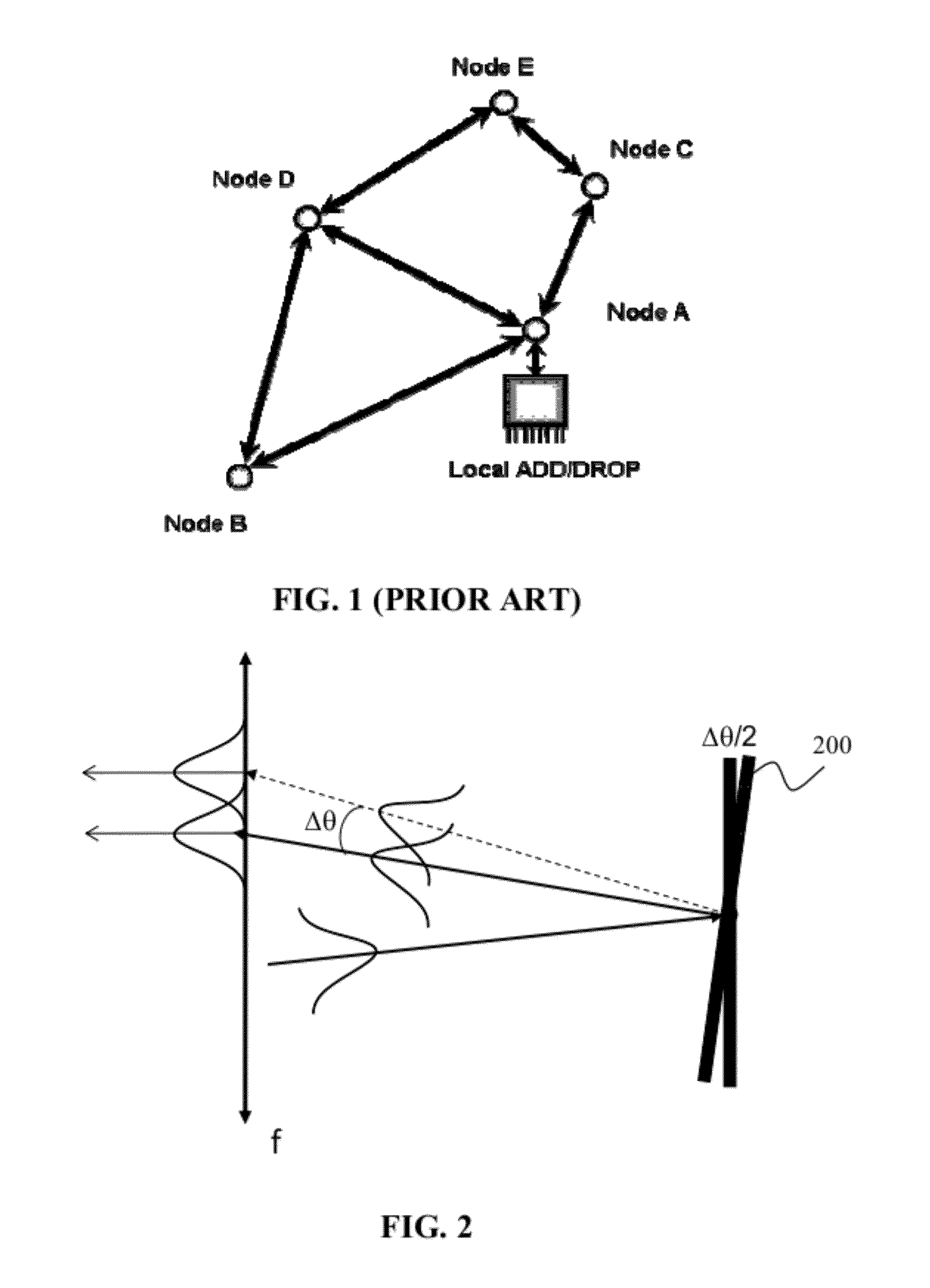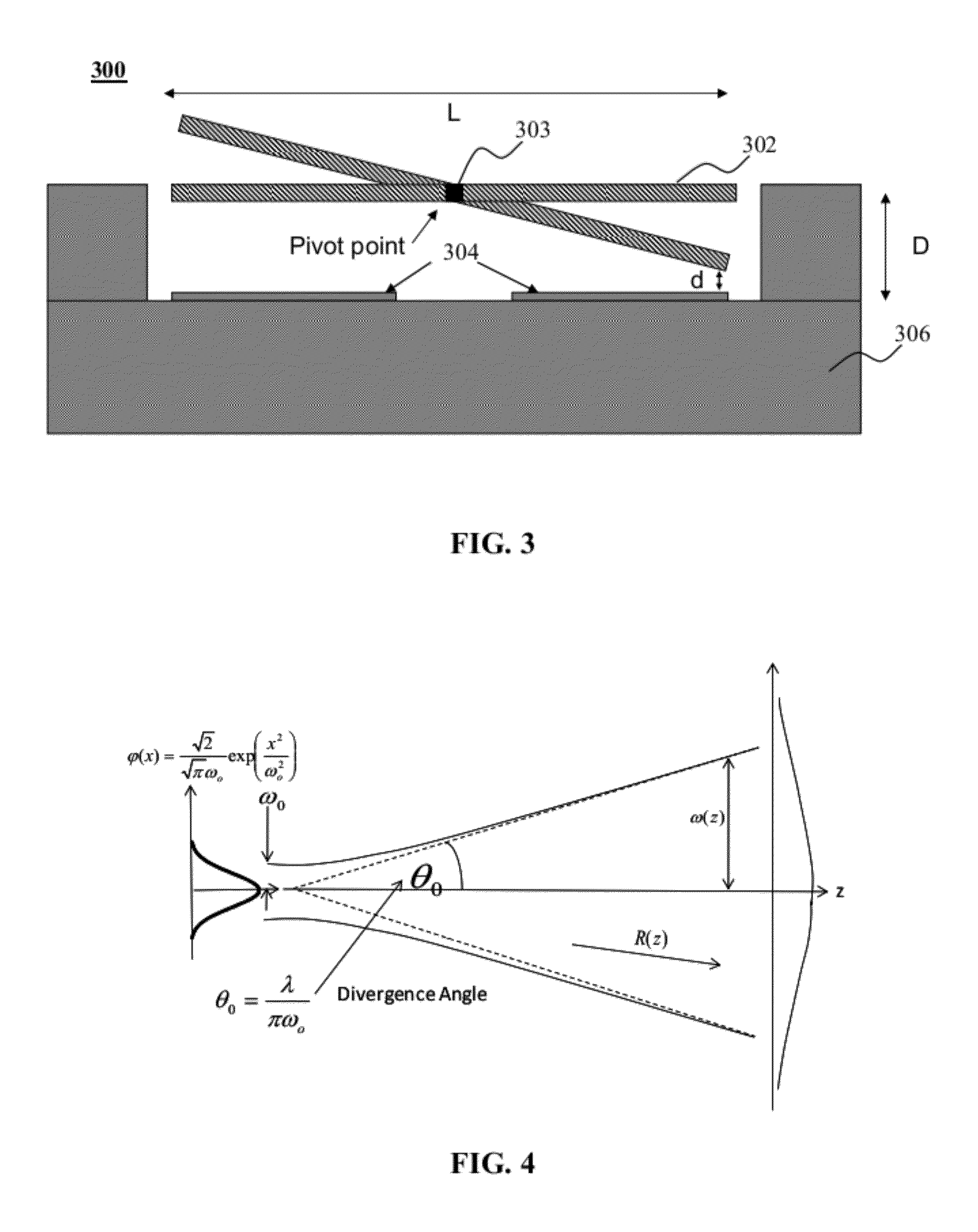Port array topology for high port count wavelength selective switch
a wavelength selective switch and port array technology, applied in the field of optical switch systems, can solve the problems of not including the practical consideration of requirements, bde's have their own deflection limitations, and the limit of the number of resolvable spots or the total number of ports, so as to reduce the required improvement in the angular range of mems mirrors, increase the allowable packing density, and save spa
- Summary
- Abstract
- Description
- Claims
- Application Information
AI Technical Summary
Benefits of technology
Problems solved by technology
Method used
Image
Examples
embodiments
[0056]Given the aforementioned technical considerations the present invention prescribes a unique topology or arrangement of the fiber collimator array to maximize the packing density of the ports for a given angle range of the micro-mirrors with consideration to the number of resolvable spots allowed by performance constraints. The beams positions at the collimator array, as determined by the BDE, are shown in FIGS. 7A-7C. The dashed circle indicates the reflected optical beam. In a “Drop” configuration shown, the center collimator with a dot at the center is the input port for a multi-wavelength beam and the other circles represent collimators or ports where the beams carrying the spectral channels are directed for out-coupling. The lines with arrows indicate the trajectory of the beam due to the angular rotation of the MEMS micro-mirrors as the out-coupling of a given channel is reconfigured from one port to a different port.
[0057]FIG. 7A is similar to FIG. 6, which shows a hitle...
PUM
 Login to View More
Login to View More Abstract
Description
Claims
Application Information
 Login to View More
Login to View More - R&D
- Intellectual Property
- Life Sciences
- Materials
- Tech Scout
- Unparalleled Data Quality
- Higher Quality Content
- 60% Fewer Hallucinations
Browse by: Latest US Patents, China's latest patents, Technical Efficacy Thesaurus, Application Domain, Technology Topic, Popular Technical Reports.
© 2025 PatSnap. All rights reserved.Legal|Privacy policy|Modern Slavery Act Transparency Statement|Sitemap|About US| Contact US: help@patsnap.com



